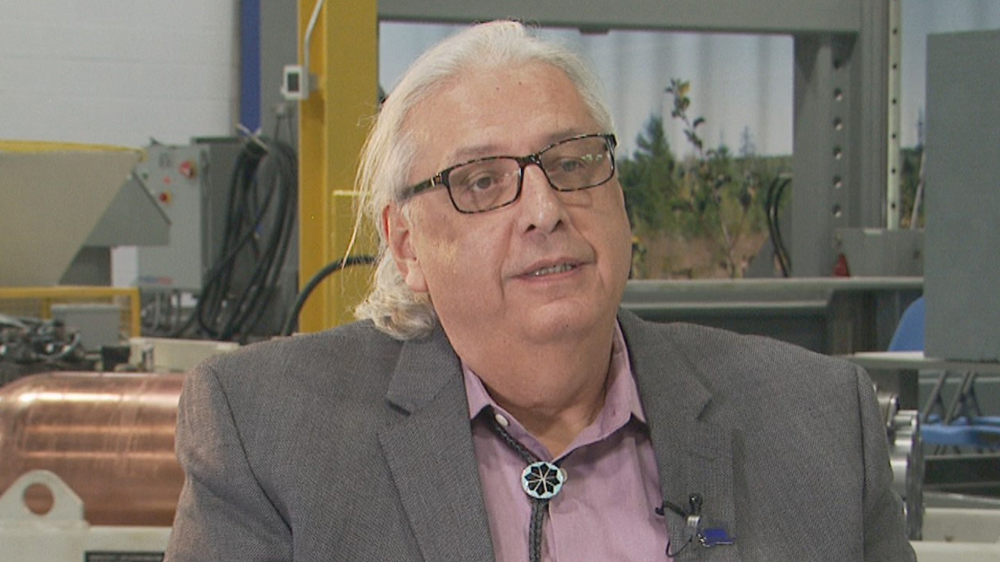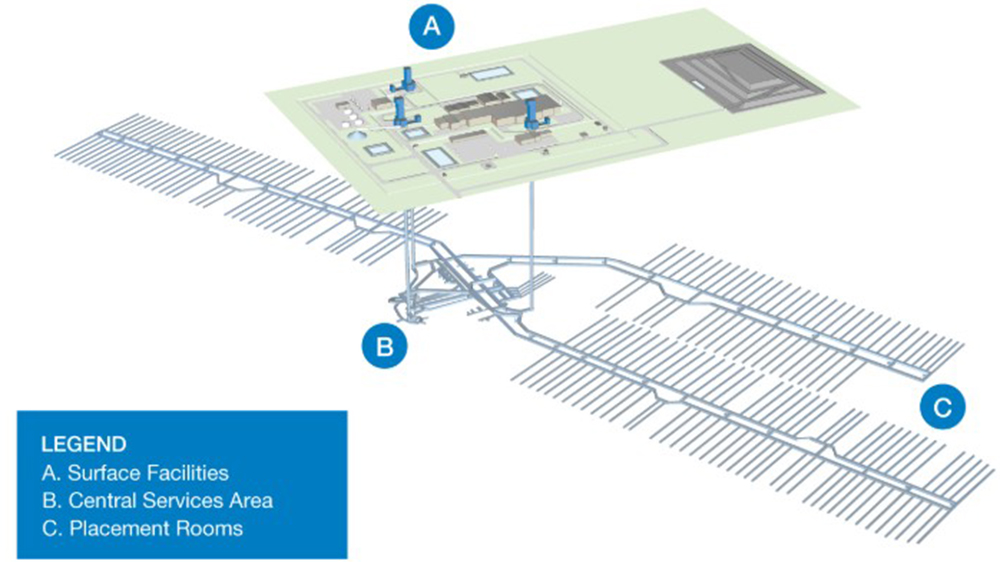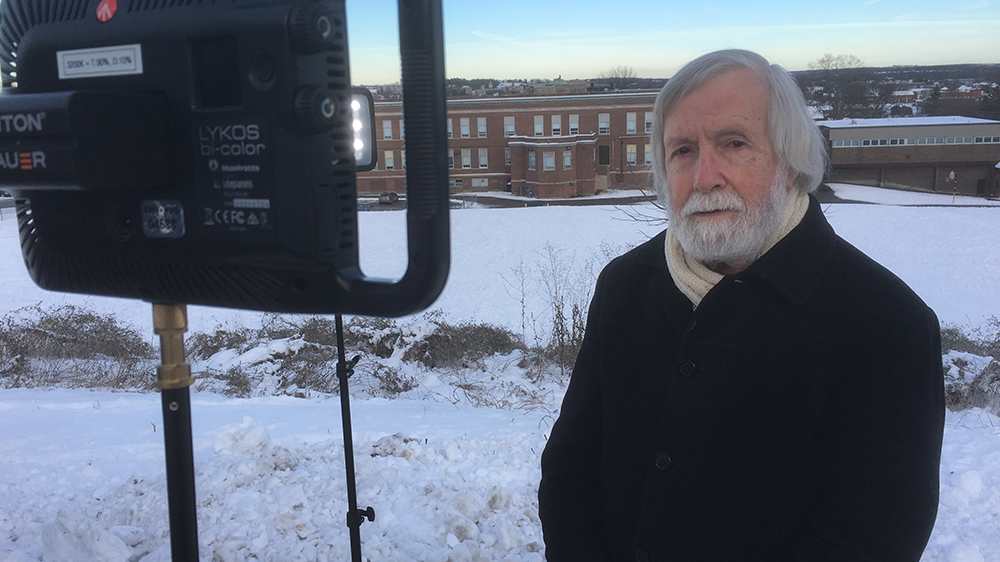In what’s referred to as “Canada’s Plan,” the Nuclear Waste Management Organization (NWMO) is looking for a place to bury 4.8 million bundles of used nuclear fuel.
More specifically, the NWMO, which is a consortium of Canadian nuclear industry players created by an act of parliament, is looking for a community willing to allow used nuclear fuel to be placed in what’s called a deep geological repository – or DGR.
Currently the NWMO is engaging with Ignace, Ontario a small community 250 km northwest of Thunder Bay, as well as the municipality of South Bruce, on Lake Huron northwest of Toronto.
Indigenous communities in both those areas are being courted and having the DGR concept pitched to them by the NWMO.
Indigenous engagement is a major focus at the NWMO.
Watch APTN Investigates: Nuclear Courtship – Part 2 here.
It has put out an eight-part video series on reconciliation, and it also employs Bob Watts as their vice president of Indigenous Relations.
Watts is a long time major player in Indigenous politics who has held high-level positions with the Assembly of First Nations and the federal government.
(NWMO Vice President of Indigenous Relations Bob Watts speaking with APTN Investigates at the NWMO’s Proof Test Facility, Oakville, Ont. Photo: Rob Smith/APTN)
Watts told APTN Investigates he is confident enough in the science that he’d hypothetically be okay with a DGR in his back yard.
“From a safety point of view I feel really good about living on top of where a DGR is – because I’m convinced of the safety case,” Watts told APTN.
The DGR concept is more than a mere hole in the ground and proponents sometimes bristle a little when it gets referred to as a “dump.”
With the latest cost estimate coming in at $23.6 billion for the vast underground facility, highly-engineered mega project might be more on point.
(NWMO graphic of its multiple barrier system. For more on the NWMO’s multiple barrier system click here. Multi-barrier
Fundamentally, a DGR needs to protect radioactive waste from water, because water could potentially bring the deadly radioactive material back into contact with our environment.
Mark Gobien, who is with the NWMO’s Safety, Technical and Research department, is confident the “multiple barrier system” employed in the DGR concept will do what it needs to.
(NWMO graphic of its deep geological repository – or DGR – concept. Image courtesy NWMO)
Gobien says it’s key that the DGR be built into bedrock that is impermeable – that does not let water through.
“In order to get any sort of release of radioactive material you’d have to have that water move though the rock,” said Gobien. “It would also have to move through our clay bentonite barrier. It would also have to penetrate our steel and copper canister that’s very durable and corrosion resistant. As well as penetrate these bundles and dissolve that fuel itself which is a ceramic material – it’s extremely durable.”
However, not everyone is sold on the safety case made by the NWMO.
Gordon Edwards is president of the Canadian Coalition for Nuclear Responsibility and is likely the nuclear industry’s best known critic in Canada.
(Gordon Edwards in Peterborough, Ont. ‘You can put barrier after barrier after barrier, that doesn’t mean that you have a safe system,’ Photo: Christopher Read/APTN)
Edwards isn’t impressed with the NWMO’s multiple barrier system.
“You can put barrier after barrier after barrier, that doesn’t mean that you have a safe system,” he said. ”The same multiple barrier philosophy is used in nuclear reactors. They say the fuel is inside metal tubes, which are called zirconium, that’s another barrier, it’s called the sheath. And those are inside pressure tubes, which is another barrier. And then that’s inside a calandria, which is another barrier. And that’s inside the reactor building, which is another barrier. Consequently, there cannot be a nuclear accident.
“Well, we’ve seen what happened with that philosophy. Chernobyl exploded and the whole area around Chernobyl is still uninhabitable and will be for at least another hundred years. Fukushima, we’ve had three reactors melting down on the same weekend and those multiple barriers were all in place.”
Edwards said the notion that we can build something to last hundreds of thousands of years, the length of time used nuclear fuel will potentially remain dangerously radioactive – is folly.
“You have to realize that the pyramids of Egypt are only 5,000 years old,” said Edwards. “Go and look at them there. They’re really deteriorated a great deal. So the half-life of plutonium is 24,000 years. The Great Lakes didn’t even exist 24,000 years ago. So we’re talking about periods of time that dwarf the span of human history.”
Edwards said he believes taking a wait-and-see approach is better than putting the used fuel in a DGR.
“We can afford to wait another century or two and see if we can come up with a genuine solution,” he said. “If we can’t come up with a genuine solution, we can continue to look after it. We can continue to transmit the information. We can continue to repackage it periodically into better and better packages, which is going to make sure. And if there is leakage that occurs, failure of containment – we can spring into action right away and fix it and not let it get out of hand. That’s a much better approach.
“This is called rolling stewardship.”
NWMO’s philosophy is that nuclear waste is a problem best managed now with a DGR.
At the same time, Bob Watts won’t let go of the possibility some other solution may yet be identified.
“Right now I’m convinced when I look at Canada and I look at the entire world that a deep geological repository is the best solution for how to deal long term with used nuclear fuel,” said Watts. “But I’m also hopeful that maybe there’s some young kid, you knowing taking Grade 11 physics that goes on to university and comes up with another solution. These are hugely expensive projects. And I think about the entire world – how much money is being spent on this – it could be spent on other things like health care or education. But this is the best solution that we have in the entire world. But I’m hopeful that it’s an Indigenous person that figures out you know if you just did this we could neutralize that – but nobody knows what that is.”
The NWMO said it hopes to have identified a willing host community for a deep geological repository by 2023.
Nuclear Courtship, Part 2 airs next week, and will be accompanied with a web story which will examine the mood of some of the communities engaging with the nuclear industry.
















Censoring people leaves you in the dark without friends who support your rights
I have written several articles about this nuclear waste facility. One point missing in your article is the transport of the waste from southern Ontario to this area. Shipping the toxic waste would need to go by rail, trucks and ships crossing to the port at Thunder Bay on Lake Superior. It’s a long haul for the 4.8 million bundles of nuclear waste, which, mathematically would fill 80 NHL size hockey rinks. One accident could pollute the drinking water for almost 80 million people.